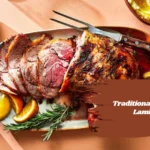You can add veggies that come back year after year to your yard once they are established. Don’t look any further!
This article will talk about eight tasty and healthy annual veggies that are also easy to grow and give you a lot of fresh food year after year.
These vegetables will stay in your yard for a long time, like the classic asparagus, the flexible rhubarb, and the unique walking onions.
Whether you’ve been gardening for a long time or are just starting out, these annual veggies will give you a steady supply of fresh food right in your own backyard.
1. Asparagus
Asparagus is a delicious and nutritious perennial vegetable that returns year after year with minimal effort. Known for its tender spears, it is a popular choice for home gardeners.
Asparagus plants can thrive in well-drained soil and prefer full sun.
It’s essential to plant asparagus crowns in a prepared bed, allowing them to establish deep roots. With proper care, including regular watering and fertilization, mature asparagus plants can produce spears for up to 15 years or more. Harvesting should begin after the second year, allowing the spears to grow to their full height before cutting.
2. Rhubarb
Rhubarb is another perennial vegetable prized for its tart flavor and versatility in cooking. It is relatively easy to grow and requires well-drained soil with plenty of organic matter. Rhubarb plants thrive in cooler climates and prefer partial shade. Planting crowns in early spring or autumn ensures a healthy start.
Once established, rhubarb plants can yield harvests for many years. Harvesting involves pulling stalks when they reach maturity, typically in late spring or early summer.
It’s essential to leave some stalks untouched to allow the plant to continue photosynthesis and store energy for the next growing season.
3. Artichokes
Artichokes are not only a delicious delicacy but also a stunning addition to any garden landscape. These perennial vegetables thrive in warm climates with mild winters, although some varieties can tolerate cooler temperatures. Artichokes prefer fertile, well-drained soil and plenty of sunlight.
Starting from seeds or young plants ensures a healthy establishment. With proper care, including regular watering and feeding, artichoke plants can produce multiple harvests of tender buds, known as artichoke hearts.
Harvesting involves cutting the buds before they fully open, typically in late spring or early summer.
4. Horseradish
Horseradish is a hardy perennial vegetable prized for its pungent flavor and culinary versatility. It grows well in various soil types but thrives in rich, well-drained soil with full sun to partial shade.
Horseradish roots can be planted in early spring or autumn, allowing them to establish before winter sets in.
Once established, horseradish plants require minimal maintenance, although they can become invasive if not contained. Harvesting involves digging up the roots in late autumn or early spring, washing them thoroughly, and processing them into the spicy condiment known as horseradish sauce.
5. Jerusalem Artichokes
Jerusalem artichokes, also known as sunchokes, are not true artichokes but rather a type of sunflower grown for their edible tubers. These hardy perennial vegetables thrive in various soil types and climates, making them a popular choice for home gardeners.
Jerusalem artichokes prefer full sun and well-drained soil but can tolerate partial shade and poorer soils. Planting tubers in early spring ensures a bountiful harvest in late autumn or early winter.
Harvesting involves digging up the tubers after the foliage dies back, typically after the first frost. Jerusalem artichokes can be stored for several months in a cool, dry place.
6. Rhubarb Chard
Rhubarb chard, also known as perpetual spinach or Swiss chard, is a leafy green perennial vegetable prized for its nutritious leaves and stems.
It is relatively easy to grow and thrives in various soil types and climates. Rhubarb chard prefers full sun to partial shade and well-drained soil rich in organic matter.
Planting seeds or young plants in early spring ensures a steady supply of fresh leaves throughout the growing season. Harvesting involves picking outer leaves as needed, allowing the inner leaves to continue growing. Regular harvesting encourages new growth and prolongs the harvest period.
7. Sorrel
Sorrel is a tangy perennial herb that is often grown as a leafy green vegetable. It is prized for its lemony flavor and culinary versatility, adding a zesty kick to salads, soups, and sauces.
Sorrel thrives in rich, well-drained soil and prefers partial shade, especially in hot climates. Planting seeds or young plants in early spring ensures a healthy establishment.
Sorrel leaves can be harvested throughout the growing season, starting when the plants reach maturity. Regular harvesting encourages new growth and prevents the plants from becoming woody. Sorrel can be enjoyed fresh or cooked and freezes well for long-term storage.
8. Walking Onions
Walking onions, also known as Egyptian onions or tree onions, are a unique perennial vegetable that produces clusters of bulbils at the top of tall stalks. These bulbils eventually bend over and root themselves in the soil, giving the appearance of “walking.”
Walking onions thrive in well-drained soil and prefer full sun to partial shade. Planting bulbils or sets in early spring ensures a bountiful harvest of green onions throughout the growing season.
Harvesting involves picking the green onions as needed, allowing the remaining bulbils to mature for future planting. Walking onions are incredibly resilient and can survive harsh conditions, making them an excellent choice for beginner gardeners.
FAQs:
FAQ 1: How do I care for perennial vegetables? Answer: Perennial vegetables require minimal care once established. Provide them with well-drained soil, plenty of sunlight, and occasional watering. Regular mulching and fertilizing can also promote healthy growth.
FAQ 2: When is the best time to harvest perennial vegetables? Answer: The timing varies depending on the type of vegetable. Generally, you can start harvesting perennial vegetables like asparagus, rhubarb, and sorrel once they reach maturity, which is typically in their second or third year of growth. For others, such as Jerusalem artichokes and walking onions, harvest when the tubers or bulbs are fully mature, usually in late autumn or early winter.







